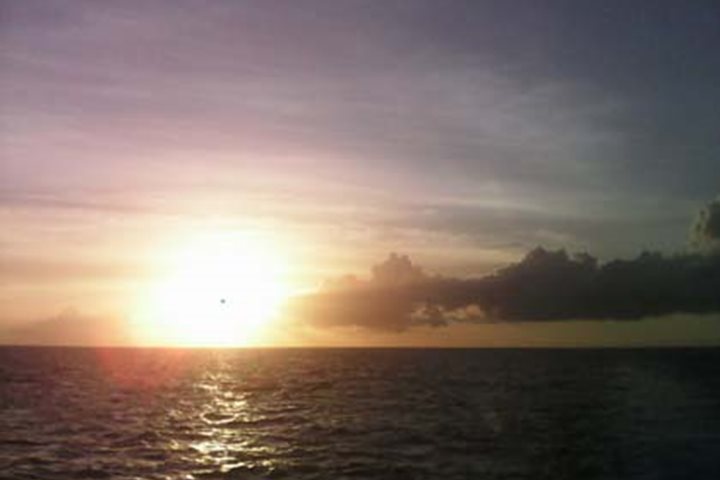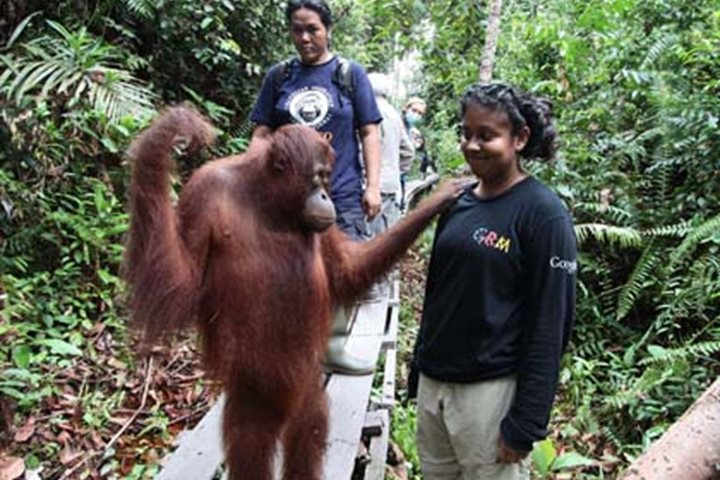The National Geographic Orion was secure to the dock in Galle as the sun rose this morning, a rose red disc climbing through the early morning haze of humidity that shrouds Sri Lanka in the beginning of the southwest monsoon season. The sights, sounds and smells of the port greeted us as they have other travelers for many centuries, speaking of the lives of the inhabitants and commerce with foreign lands around the globe. Just across from our berth was a fishing harbor full of colorful boats and not far away rose the walls of the 16th century Portuguese fort. We felt quite in tune with the warm, slow pulse of this beautiful city and our expedition through the wild islands of the Indian Ocean was off to a good start.
Sri Lanka has been famous for the quality of its tea since early in the colonial era and it was this side of the island’s personality that engaged some of us for the morning. We set out along the coast road, heading south from Galle toward the southern tip of the island. Along the way we had the good fortune of spotting a small group of stilt fishermen. Perched on small crossbars set on single poles that had been driven into the bottom, these men used long rods made from the fishtail palm to troll the surf. Groups of stilt fishermen balanced above the waves are certainly one of the iconic scenes of Sri Lanka and we were very happy to have the impromptu opportunity to capture our own versions of these famous images.
A little further along the road we turned inland and followed a series of narrow dirt tracks beside muddy fields where men were preparing for the new rice crops, attended by flocks of egrets eager for a quick meal of the fish, frogs and insects flushed up by the farmers. Arriving at the grounds of Handunugoda Tea Plantation, we were greeted by the owner who conducted a thorough tour for us. We walked through the fields where a few women were harvesting the flush of new leaves from the top of the dark green bushes, stopped for cake and a cup of delicious oolong and were shown through the processing factory where machines that had been in continuous use for 145 years were still grinding away, crushing, drying and cleaning the leaves for packaging and sale.
Sri Lanka is also a biodiversity hotspot – the most biodiverse region of its size anywhere in Asia – with many endemic species of insects, amphibians and birds. Eager to explore this aspect of the island, another group of us set out for a morning’s excursion in a nearby wetland area. We drove north on the coast road to a broad river, really a lake contained by a dam, where we boarded small boats and cruised out onto the placid green water, passing shrimp weirs and small jungle-covered islands, keeping a sharp eye out for swimming water monitors, Indian cormorants, brahminy kites and bright white-chinned kingfishers. Along the way we made a couple of stops, to visit a cinnamon plantation and a beautiful old Buddhist temple.
By mid-afternoon we had all returned to the ship, had a short rest and were ready to head out again, this time for a very short ride to the nearby fort and a walking tour of the old Portuguese Quarter. We strolled on the high ramparts of the huge fort, thinking of the fantastic amount of hand labor required for its construction and the long-gone days of the early colonial era when it was built. Even surrounded by the military and commercial architecture of this period, we found it to be a time that was quite challenging to imagine from our perspective as travelers on a comfortable modern expedition ship. Our next stop was the excellent Maritime Museum, which gave further detail to our growing mental picture of Galle as a hub in a network of trade routes stretching from China to Europe, centuries ago. From ancient commerce to modern, we moved on into the narrow streets and alleys of the Portuguese Quarter, now full of fashionable cafés, galleries and boutiques, dropped as if by magic among the crumbling walls and red tiles roofs of the old city.
Expedition travel often carries us to beautiful fascinating places all around the globe. Today our journey was not so much in space but in time, building modern sights and sounds into a rich experience of the ancient island of Sri Lanka.







